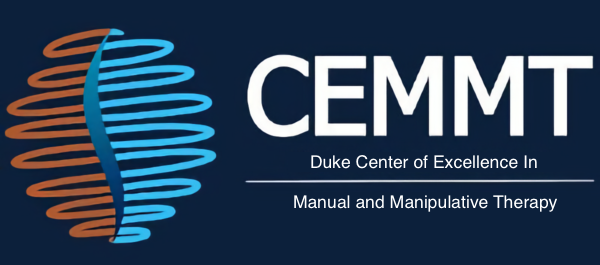Author Names
Alamer, A, Melese, H, Getie, K, Deme, S, Tsega, M, Ayhualem, S, Birhanie, G, Abich, Y, Gelaw, A
Reviewer Name
Lauren Schaeffer, SPT
Reviewer Affiliations
Duke University School of Medicine, Doctor of Physical Therapy Division
Paper Abstract
Background : Ankle joint mobilization with movement has been speculated to be an important intervention for enhancing range of motion, balance, and gait functions in chronic stroke survivors. Nonetheless, there is a scarcity of recent conclusive evidence that evaluates its efficacy in chronic stroke patients. The purpose of this review was to synthesize existing evidence on the efficacy of mobilization with movement therapy on range of motion, balance, and gait performance in subjects after stroke.
Methods : A comprehensive systematic search of literature was performed using the following databases: PubMed/Medline, CINAHL, AMED, PEDro, Cochrane Library, and Scopus. Physiotherapy Evidence Database (PEDro) scale was used to evaluate the methodological quality of included trials. The primary outcome measures of this review were dorsiflexion range of motion (DF-ROM), and Berg balance scale (BBS). This review was reported in accordance with PRISMA statement guidelines. Due to variations in relevant trials, meta-analysis was not carried out.
Results and Conclusions : Seven randomized controlled trials with a total of 224 subjects were analyzed. Evidence of overall quality was graded from moderate to high. This review found that mobilization with movement therapy could be an alternative rehabilitative intervention for subjects with chronic stroke to increase range of motion, balance, and gait ability. However, the evidence remains preliminary due to the small number of participants. Large-scale RCTs in the future are warranted to investigate the efficacy of mobilization with movement in subgroups of chronic stroke subjects.
NIH Risk of Bias Tool
Quality Assessment of Systematic Reviews and Meta-Analyses
Is the review based on a focused question that is adequately formulated and described?
- Yes
Were eligibility criteria for included and excluded studies predefined and specified?
- Yes
Did the literature search strategy use a comprehensive, systematic approach?
- Yes
Were titles, abstracts, and full-text articles dually and independently reviewed for inclusion and exclusion to minimize bias?
- Yes
Was the quality of each included study rated independently by two or more reviewers using a standard method to appraise its internal validity?
- Yes
Were the included studies listed along with important characteristics and results of each study?
- Yes
Was publication bias assessed?
- Yes
Was heterogeneity assessed? (This question applies only to meta-analyses.)
- Cannot Determine, Not Reported, Not Applicable
Key Finding #1
All 5 studies that investigated range of motion post stroke showed significant improvement with MWM interventions.
Key Finding #2
Balance of stroke survivors was improved with MWM in 6 studies where it was investigated.
Key Finding #3
All seven studies showed improvements in gait spatial parameters with MWM.
Please provide your summary of the paper
This systematic review investigated the efficacy of ankle mobilizations with movement (MWM) to increase ankle dorsiflexion range of motion, improve balance, and enhance gait function post stroke. Seven randomized control trials were analyzed in this review paper including 224 participants with hemiplegia who had chronic strokes (defined as greater than 3 years since injury). The MWM that was investigated is a posterior to anterior tibial glide on the talus while closed-chain active dorsiflexion is performed to increase the accessory motion associated with ankle dorsiflexion. The control group received conventional physical therapy interventions while the experimental group was given MWMs and/or conventional physical therapy. Dorsiflexion range of motion (ROM), the berg balance scale, and gait parameters (velocity, cadence, stride length, single-support time, and step length), in addition to a few other outcome measures, were used in this review. Participants received physical therapy 3-5 times a week for 20-30 minutes each session for a length of 4-5 weeks. The study reviewed randomized control trials in English with relevant data and MWMs. The PEDro scale was performed on the included seven studies to determine the quality. All studies that investigated the effect of MWM on dorsiflexion ROM, gait, and/or balance revealed significant improvements with the interventions compared to the controls. This systematic review reveals the extensive benefits of MWM on chronic stroke patient’s ankle function. Future research should continue to investigate the benefit of MWM with a larger sample size to advance the reliability of the results.
Please provide your clinical interpretation of this paper. Include how this study may impact clinical practice and how the results can be implemented.
This study reflects the importance for performing weight bearing dependent manipulations with movement in post-stroke interventions. The MWM have the potential to increase arthrokinematic accessory motions and capsule extensibility within the joint to improve ROM, enhance weight bearing for gait development, and activate proprioceptive stretch receptors that contribute to improved balance. Clinicians can diversify their interventions by incorporating manipulations with movement when treating patients experiencing dorsiflexion ROM impairments from a chronic stroke.
